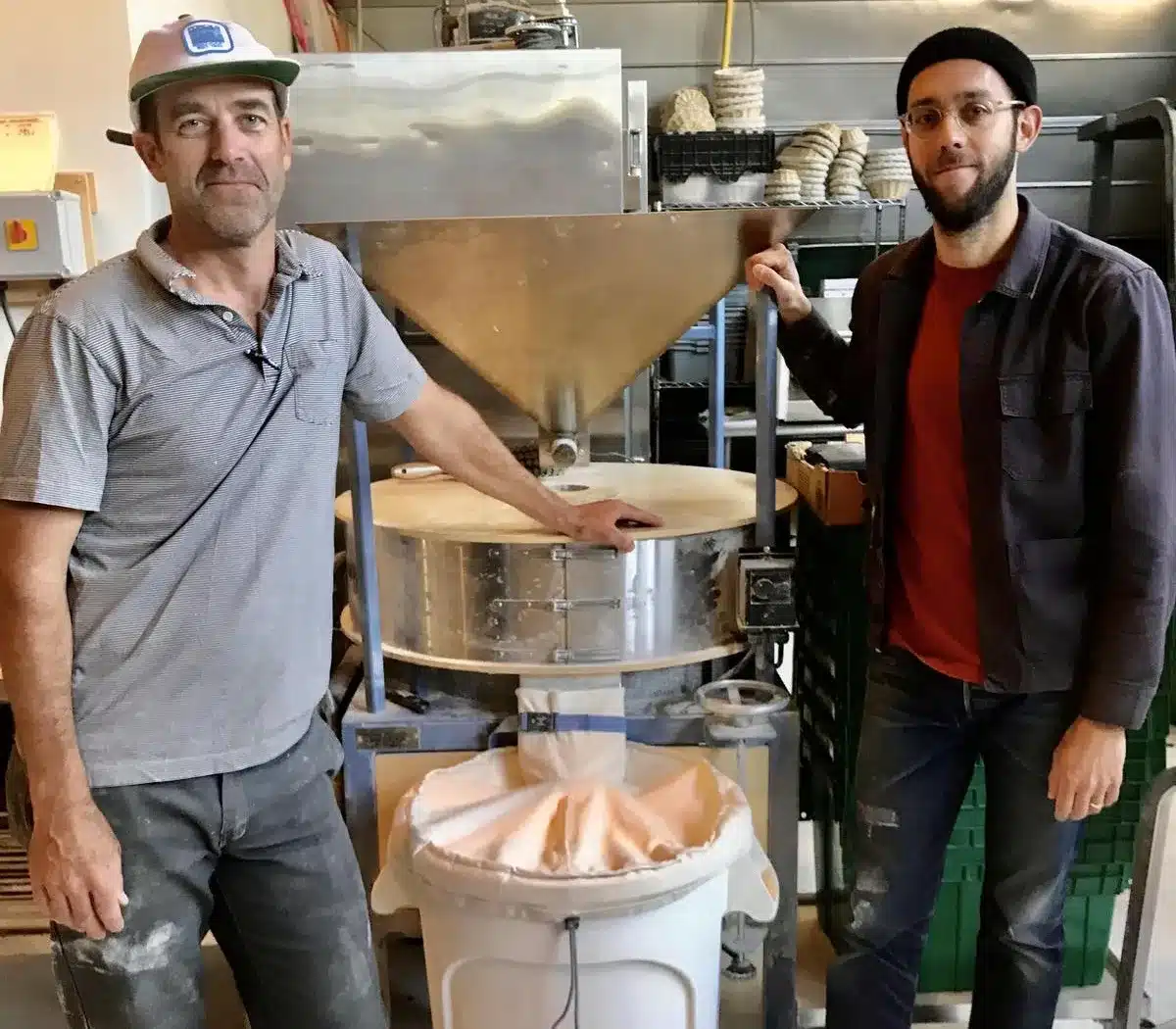From grain to grist to bread



Making bread is a careful, reverent undertaking at Grist Milling and Bakery. Bakers prioritize tradition, nutrition, and flavor.
“Other than using electricity, we make bread the same way people did 2,000 years ago,” Dan says. “We’re grinding grain to grist and adding water and sourdough—the process is unchanged.”

Dan and his business partner, Selden Daume, worked as bakers in Missoula for many years before starting Grist. Selden said the idea for the business emerged from his desire to run a small-scale bakery, focused on super fresh whole grain, organic sourdough bread.
Grist bread is a unique offering in Montana. Most baked goods available in grocery stores are made with refined flour and leavened with yeast. That’s a faster, cheaper method than Grist’s, but Selden says it sacrifices the nutrition and complex sourdough flavor available in bread made slowly.
Selden says some people are initially wary of Grist bread’s price tag or strong flavor, but the bread itself wins people over.
“When people try it, they understand it,” he said.
On a typical morning in the bakery in the back room of Black Coffee in Missoula, Selden makes croissants. Another baker pours flour, salt, and sourdough levain into an enormous bowl, preparing to mix up a batch of dough.
It’s 9 a.m. and the team has already been baking for hours. Racks full of browned pastries and loaves of bread line the work space. The floor is slick with flour.

Selden says baking bread is a gratifying enterprise.
“By the end of the day there’s a big rack of beautiful bread that someone takes home and tears into,” he says.
Grist’s bread-making process starts with the grain. It’s grown just hours from the bakery, in north-central Montana’s Golden Triangle region. Dan says Montana grain was the obvious choice.
“Montana grows so much grain—why not use it to make our bread?” he says.
The bakery uses a mill made in Vermont. It’s a simple machine. Two large discs of stone are stacked on top of each other, nearly touching. When he’s ready to make bread, Selden hoists a bag of wheat into the funnel-shaped opening at the top of the mill. The grist is ground into flour between the two stones. Seconds later it emerges from the mill as finely ground flour. The entire wheat grain becomes flour, so it retains all of its innate nutrition.
“This will be bread tomorrow,” Dan says. Freshly ground flour makes especially nutritious bread.

Once Grist’s flour is ground, it’s mixed into pastries and breads using simple sourdough recipes. The dough rests for hours, giving the gluten time to break down. That makes the bread easier to digest. The slow, simple process is a hallmark of Grist’s approach.
The bread is baked to a deep caramel color and packaged in simple brown paper bags. Some loaves are sold in Black Coffee, just feet from where they transformed from wheat grains into bread. Others are distributed to grocery stores around the region.
Customers can expect the bread and pastry selection at Grist to evolve. Dan said he’s looking forward to getting rye bread on the shelves as the weather cools. The owners plan to start purchasing heirloom grains directly from Montana farmers.
Dan and Selden want to continue building relationships within the Montana food system, and with their customers. Dan says those relationships are central to Grist’s purpose.
“People want to be connected to the process that makes their food,” Dan says.
In a room where bakers tenderly transform local grain into bread, that connection is palpable.
Learn more about Grist at their Abundant Montana listing here.
